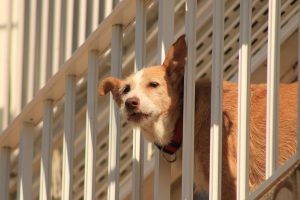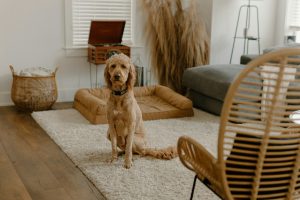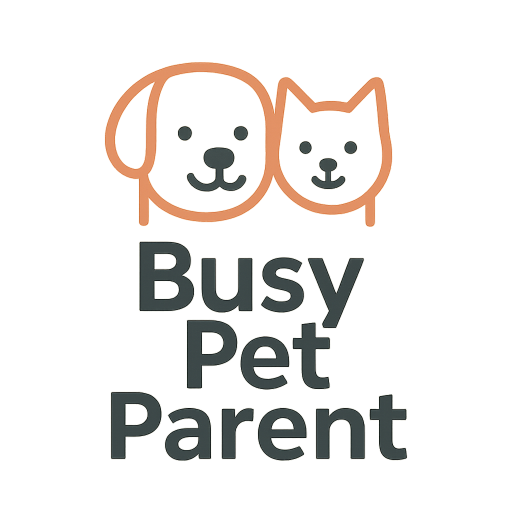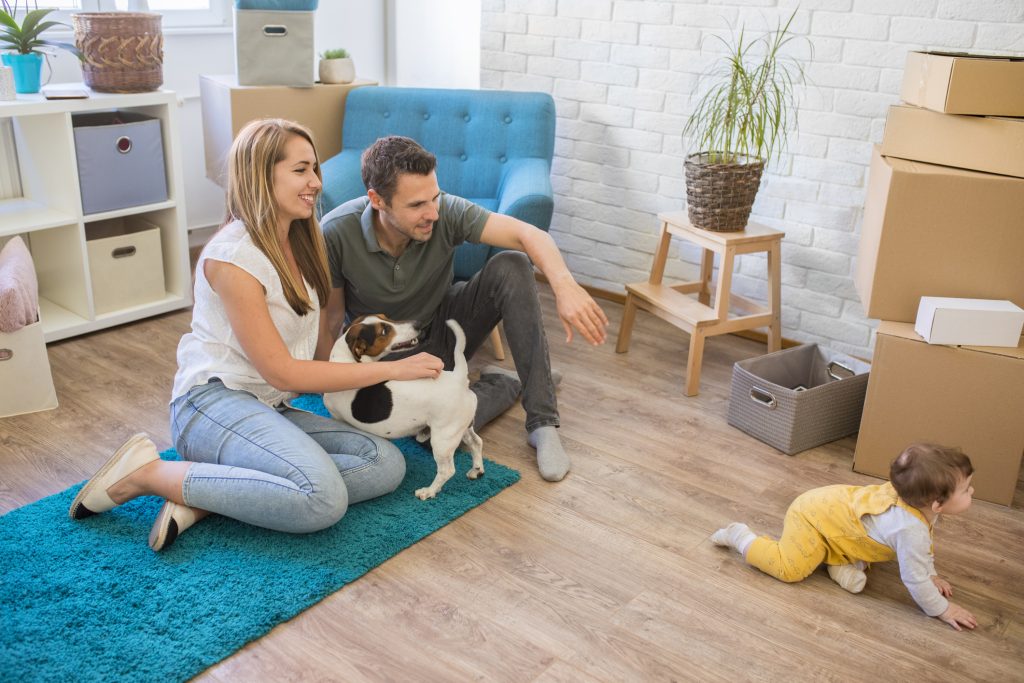
25 Genius Pet Safety Tips for Apartment Living (Room-by-Room Guide)
Living in an apartment with pets brings joy, cuddles—and a few hidden hazards you may not even realize exist. Tight spaces, high balconies, hidden cords, and cleaning supplies can pose risks to curious paws and playful tails. The good news? A safer apartment doesn’t mean a major renovation. It just takes a room-by-room strategy.
This ultimate guide shares 25 genius pet safety tips for apartment living, organized by area so you can tackle one space at a time. Whether you’re a new puppy parent or seasoned cat guardian, these tips help create a secure, cozy home your pet will thrive in.
1. Use a Crate or Playpen Safely
Crates and indoor playpens can be lifesavers in an apartment—helping keep pets out of trouble while you’re gone or busy. But improper use can cause stress or even injury. Always choose the right size, avoid wire flooring, and never use confinement as punishment. Ensure it’s in a well-ventilated area, away from direct sunlight or heaters.
For gentle, effective crate training tips, explore these puppy training tips for apartment dwellers.
2. Make Your Balcony Pet-Safe
High balconies can be dangerous—even for agile pets. Cats can slip through railings, and dogs may jump in excitement. Install balcony mesh or plexiglass barriers, never leave pets unattended, and avoid placing climbable furniture near the edge. Keep plants and toxic décor items off the balcony too.
Learn how to create a fun, enclosed space with this guide to safe dog-friendly balconies.
3. Anchor Wobbly Furniture and Shelves
Tall bookshelves, unstable dressers, or unsecured TVs can topple over if bumped or climbed. This is especially dangerous in small apartments where space is tight and pets often jump or brush against things. Use anti-tip brackets, furniture straps, or adhesive wall anchors to keep large items safely secured.
Cats in particular love to scale furniture, so anchoring tall items protects both your belongings and your furry friend.
4. Cover Power Cords and Charging Cables
Loose cables can look like toys to pets—especially teething puppies and curious cats. Chewing on live wires is not only dangerous but can result in burns, shocks, or even fatal injuries. Use cord concealers, cable management boxes, or flexible plastic tubing to bundle and hide cords. Velcro straps can also keep things tidy and out of reach.
Always unplug devices when not in use, especially in low-visibility corners.
5. Swap Out Toxic Houseplants
That lush plant corner may be pretty—but not all greenery is safe for pets. Common houseplants like pothos, philodendrons, lilies, and sago palms are toxic to cats and dogs if ingested. Instead, decorate with pet-safe options like spider plants, bamboo palms, or Boston ferns. Always keep plants out of reach, and double-check every new leaf before bringing it home.
ASPCA’s plant list is a great resource for verifying pet safety before decorating.
6. Add Supportive Gear for Senior Pets
Aging pets can struggle with slippery floors, stairs, or high furniture. Help them stay safe and mobile with orthopedic beds, pet stairs, anti-slip socks, and ramps. These simple adjustments reduce the risk of joint strain or dangerous falls.
For more gear ideas, check out our post on senior dog support essentials.
7. Use Pet-Safe Cleaning Supplies
Many standard cleaning products contain harsh chemicals that are harmful to pets if inhaled, licked, or absorbed through their paws. Opt for non-toxic, pet-safe cleaners—especially on floors, countertops, and litter box areas. Look for products that clearly state they’re safe for homes with animals.
Always keep pets away while cleaning and until surfaces are fully dry.
8. Secure Trash Cans and Food Containers
Trash bins can be treasure troves for pets—and major safety hazards. Dispose of food scraps, bones, wrappers, and sharp objects in sealed containers. Use locking lids, under-sink storage, or pet-proof bins to prevent scavenging. For added safety, store dry food in airtight containers to avoid contamination or curious noses.
This is especially important for large dogs or clever cats that know how to tip over bins.
9. Secure Trash Cans and Compost Bins
Many pets are drawn to the enticing smells of the trash—but garbage bins can contain sharp objects, spoiled food, and toxic substances like coffee grounds, chocolate, or bones. Use lidded, locking trash cans or store bins behind closed doors, such as in a cabinet or under the sink.
In apartments, small spaces mean even a tipped-over bin can create a major mess and risk. Keep waste secured and inaccessible.
10. Install Window Screens and Guards
Open windows may provide airflow, but they’re a serious fall risk for pets—especially curious cats. Window screens should be sturdy and firmly secured to prevent accidental falls. Consider installing pet-proof screens or window guards for extra safety.
Even if your pet doesn’t usually sit on the sill, all it takes is one tempting bird or breeze to trigger a dangerous leap.
11. Lock Up Cleaning Supplies and Medications
Many everyday household products—like bleach, disinfectant wipes, laundry pods, and prescription medications—are toxic to pets. Store them in cabinets with childproof latches or up high where your pets can’t reach. Never leave open containers on low shelves or counters.
Be especially cautious with strong-smelling items, which pets may try to investigate.
12. Designate a Pet Emergency Supply Area
Emergencies can strike without warning. Have a designated pet emergency zone in your apartment with supplies like extra food, water, medications, a first-aid kit, collapsible bowls, leashes, vet records, and a carrier. Store it in an easy-to-grab bin or backpack.
This ensures you’re ready to evacuate safely with your pet during a fire, flood, or power outage.
13. Secure the Trash Can
Many pets can’t resist the tempting smells of the trash can—but rummaging through the garbage can expose them to toxic foods, sharp objects, and choking hazards. Choose a trash can with a tight-fitting lid or store it inside a cabinet with a child lock. This is especially important in the kitchen and bathroom where dangerous items like food scraps, medications, or cleaning wipes are commonly tossed.
Keep recycling bins out of reach as well, especially if they contain cans or plastic with sharp edges.
14. Lock Away Medications and Toiletries
Human medications, toothpaste, deodorant, and even lotions can all be harmful to pets if ingested. Curious cats may knock items off shelves while sniffing around, and dogs might chew through childproof bottles. Store all medications and personal care products in cabinets, drawers, or containers with secure lids. Never leave pills or loose products on countertops.
Pet-safe storage is especially crucial in shared spaces like the bathroom or nightstand.
15. Keep Doors and Toilet Lids Closed
Always keep toilet lids closed—especially in homes with small pets who might fall in, drink the water, or be exposed to cleaning chemicals. Additionally, make a habit of keeping bathroom, closet, and bedroom doors closed when unsupervised. Pets can sneak in, hide in laundry piles, or get stuck inside drawers or hampers.
This small habit helps prevent accidents, ingestion hazards, or moments of panic when you can’t find your pet.
16. Block Off Small Gaps and Tight Spaces
Pets—especially kittens, small dogs, or toy breeds—can easily wiggle into tight spaces behind furniture, appliances, or inside open vents. Use foam strips, baby gates, or furniture bumpers to block access to these gaps. Check behind your washer and dryer, under your bed, and between couches or shelves for areas a curious pet might explore.
Blocking tight gaps can prevent injury, choking hazards, or hours of panic trying to lure a trapped pet.
17. Keep Trash Cans Sealed and Secure
Trash can contents are a danger zone—think chicken bones, string, plastic, and chemical cleaners. Pets, especially dogs and curious cats, may rummage through uncovered bins and ingest something harmful.
Use lidded, pet-proof trash cans or place them in closed cabinets to prevent access. Bathroom bins are often overlooked but just as hazardous.
18. Lock Away Cleaning Supplies
Many common household cleaners contain bleach, ammonia, or other toxic ingredients that can harm pets if inhaled or ingested.
Store cleaning agents in high cabinets or locked closets. Consider pet-safe, non-toxic cleaning products where possible.
19. Keep Doors Closed or Use Baby Gates
Limiting pet access to unsafe areas like kitchens, laundry rooms, or balconies can prevent accidents.
Use baby gates, door latches, or closed doors to control movement throughout your apartment, especially when you’re not home.
20. Avoid Sharp Decor and Glass Items
Fragile home decor, glass picture frames, or sharp-edged furnishings can injure pets who like to jump or explore elevated surfaces.
Opt for rounded-edge furniture, shatter-resistant materials, and avoid placing breakables where pets may knock them over.
21. Pet-Proof Wires and Cords
Exposed wires and cords can be tempting for pets to chew, especially puppies and kittens. Bundle cords together and hide them behind furniture or use pet-proof cord covers.
Chewed cords can lead to burns, electrocution, or fire risks. A few cable organizers go a long way in prevention.
22. Be Mindful with Open Flames
Candles, incense, or stovetop flames can pose a major hazard in small apartments. A wagging tail or curious paw could knock over a candle, resulting in burns or fires.
Use flameless LED candles or place real flames far from surfaces pets can reach or climb onto.
23. Use Pet-Safe Pest Control
Cockroach bait, ant traps, and rodent poisons can be lethal to pets. If pest control is needed in your apartment, always ask for pet-safe solutions or opt for non-toxic alternatives.
Inform your property manager and pest control team that you have pets in the home.
24. Keep Heavy Items Off High Shelves
If a pet jumps up and knocks over a heavy plant, a falling frame or decor item could lead to serious injury.
Keep heavy decor low and secure. Wall-mounted shelves should be anchored properly and checked regularly for stability.
25. Create a Calm and Predictable Routine
Safety isn’t just about physical hazards—it also means creating a low-stress, secure environment. Pets thrive on routine. Feed them at consistent times, keep noise levels reasonable, and avoid rearranging their space too often.
A predictable daily rhythm helps pets feel stable and prevents behavior problems linked to stress or anxiety.
Final Thoughts
Apartment living with pets doesn’t have to mean constant hazards. With a bit of planning, some clever gear, and these 25 genius pet safety tips for apartment living, you can create a cozy, secure home that protects your furry companions and gives you peace of mind. From balconies and kitchens to bedrooms and bathrooms, every room can be made pet-safe without sacrificing comfort or style. The more proactive you are, the safer—and happier—your apartment will be for everyone.
Frequently Asked Questions
What are the biggest pet safety hazards in apartments?
Common hazards include loose electrical cords, toxic houseplants, open windows or balconies, human medications, and cleaning supplies. Because apartments are compact, even small oversights can pose big risks.
How can I pet-proof my balcony safely?
Use privacy mesh, baby gates, or plexiglass panels to block gaps in railings. Add shade, cozy bedding, and never leave pets unattended. For a complete guide, see our balcony safety tips.
Are there any pet-safe cleaning products you recommend?
Look for plant-based or enzyme-based formulas without ammonia, bleach, or formaldehyde. Vinegar and baking soda mixtures also work well for basic cleaning and odor control.
Do I need special pet gear for senior pets in apartments?
Yes—ramp steps, orthopedic beds, and secure litter trays or pee pads can help. Explore our senior dog gear list for apartment-friendly solutions.
How do I teach a new puppy about apartment safety?
Crate training, basic obedience, and positive reinforcement are key. Introduce safe zones and discourage chewing or jumping on unsafe items. Start with our puppy apartment training tips.
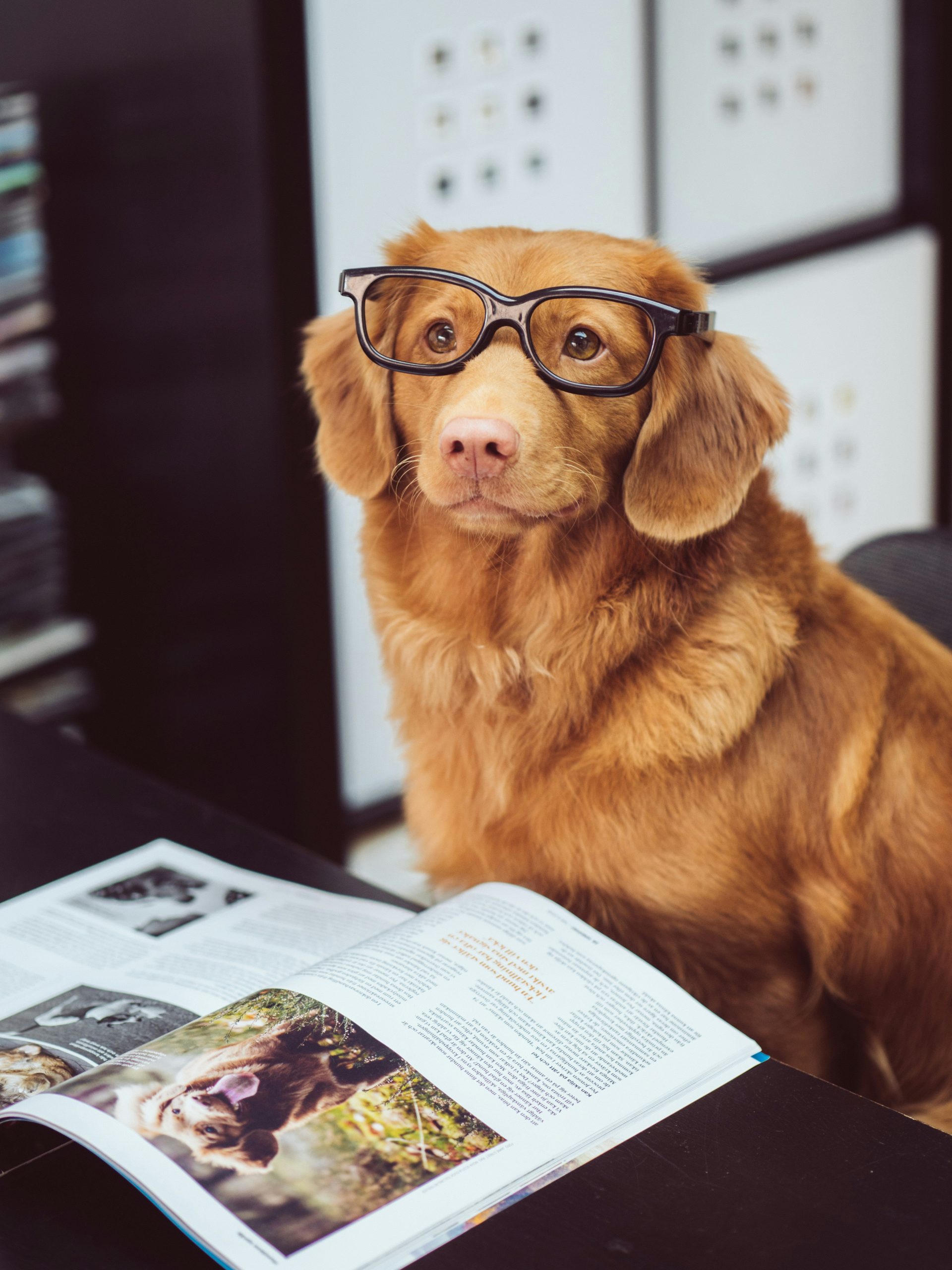
Join the Busy Pet Parent Newsletter!
Get easy routines, time-saving tips, and the latest gear reviews—delivered straight to your inbox.
Perfect for busy pet owners, apartment dwellers, and anyone who wants a happy, healthy companion (without the stress).
Exclusive guides & checklists
Product recommendations & deals
No spam—unsubscribe anytime!

